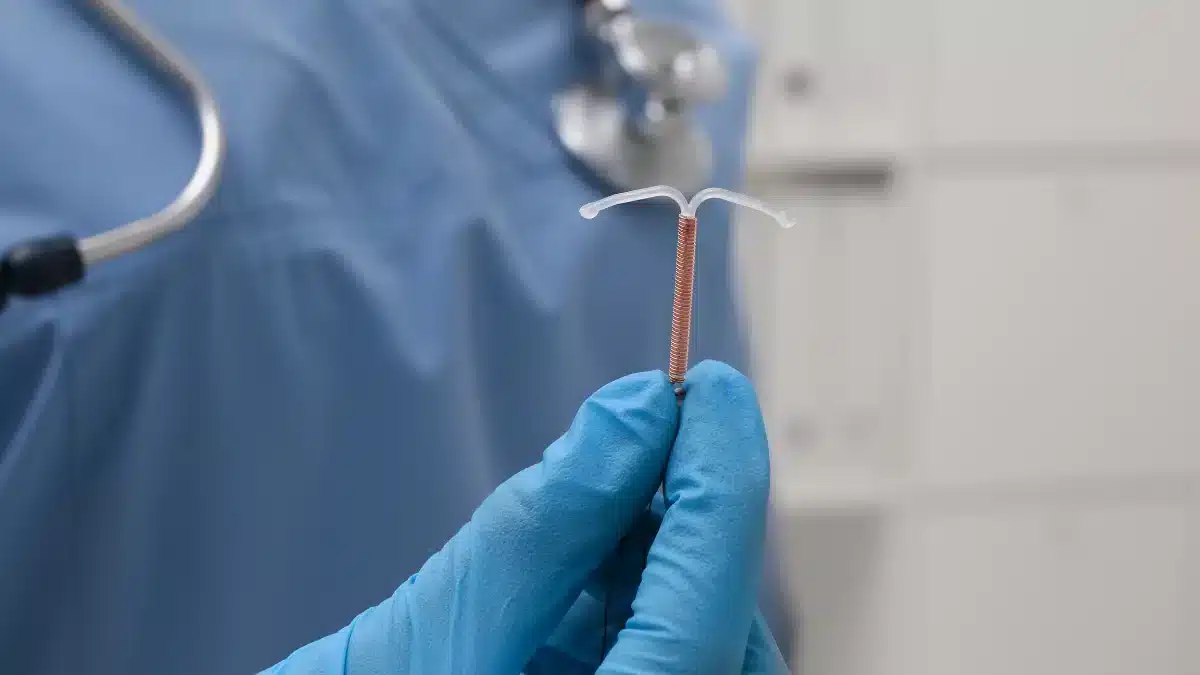Exploring Copper IUD Effectiveness: A Reliable Contraceptive Option
Copper Intrauterine Devices are small, T-shaped devices inserted into the uterus by a healthcare professional.
According to a study published by the National Library of Medicine in 2010, more than 150 million women worldwide rely on Copper IUDs for contraception.
Despite their widespread use, many individuals are concerned about its efficacy.
Copper IUD effectiveness can vary based on several factors.
This article will explore the copper IUD effectiveness and the factors that can impact its efficacy in detail.
How effective is the copper IUD
The copper Intrauterine Device (IUD) serves as a highly effective method of contraception.
This device has a very low failure rate of approximately 0.1%.
According to a study published by The National Library of Medicine in 2012, copper IUDs stand out as a reliable option for preventing unintended pregnancies by over 99 percent.
How long until copper IUD is effective
Copper IUDs offer long-term protection, making a reliable method of contraception without the need for daily or monthly interventions.
Once inserted, a Copper IUD can remain in place for up to 10 years, providing a decade of worry-free birth control.
They are sold under various brand names. Paragard is a widely used brand for contraception.
Unlike permanent methods of contraception, Copper IUDs offer reversibility.
A woman can have the IUD removed at any time, allowing for a swift return to fertility.
Factors that hinder copper IUD effectiveness
While Copper IUDs are highly effective at preventing pregnancies, certain factors can potentially impact their efficacy.
It’s crucial to be aware of these considerations to maximize the effectiveness of this contraceptive method:
Incorrect placement
Proper placement of the Copper IUD by a qualified healthcare professional is essential.
If the device is not inserted correctly, it may contribute to contraceptive failure.
Expulsion
In rare cases, the Copper IUD may be expelled from the uterus.
This can happen without the person being aware of it.
Regular check-ups with healthcare providers can help ensure the IUD is in the correct position.
Infections

Pelvic infections, especially those contracted after the IUD insertion, can reduce the effectiveness of Copper IUDs.
Follow proper hygiene practices and seek prompt medical attention if signs of infection, such as unusual discharge or pelvic pain, occur.
Copper allergy
Individuals with a known allergy to copper may experience adverse reactions that could affect the copper IUD effectiveness.
Allergic reactions to copper IUDs are rare but should be addressed promptly if suspected.
Uterine abnormalities
Distorted uterine anatomy or conditions that affect the shape of the uterus may impact the IUD’s effectiveness.
It can make it difficult for device to stay in place and provide optimal contraceptive protection.
Considerations
While using copper IUDs, it is essential to keep a few things in mind.
It includes the following:
Not for everyone
Copper IUDs are not suitable for everyone.
Individuals who have the following problems should be cautious and advised against using this contraceptive method:
- Low iron levels
- Heavy periods
- Endometriosis (where the uterus lining grows outside the uterus)
Consultation with healthcare providers is crucial to know if a Copper IUD is the right choice based on an individual’s health history and preferences.
Heavier menstrual bleeding

One notable side effect of Copper IUDs is an increase in menstrual bleeding and pain for some women.
While this is not a concern for everyone, it is essential to consider individual reactions.
Conclusion
Copper IUDs are highly effective for women seeking long-term, hormone-free contraception.
This device offers immediate protection for up to 10 years.
Factors like incorrect placement, pelvic infections and copper allergy can influence effectiveness.
Potential side effects, such as heavy menstrual bleeding, exist in a few cases.
However, the overall efficacy and convenience of Copper IUDs contribute to a reliable contraceptive choice.
It is crucial to consult with healthcare professionals to know the most suitable contraceptive option based on individual health needs and preferences.
Frequently Asked Questions
How effective is a copper IUD?
The copper IUD is highly effective, boasting an efficacy rate of over 99%. Its ability to prevent unintended pregnancies makes it a reliable choice for individuals seeking a contraception method with a low failure rate.
How long until copper IUD is effective?
The copper IUD is effective immediately upon insertion and offers long-term protection for up to 10 years. It provides continuous, worry-free birth control throughout its duration in the uterus. Consult with a healthcare provider to ensure its suitability based on individual health considerations and preferences.
What are the factors that can impact copper IUD effectiveness?
There are various factors that can influence copper IUD effectiveness. It includes incorrect placement, expulsion, infections, copper allergy, and uterine abnormalities. Regular check-ups with healthcare providers are essential to address these potential influences.
Who should be cautious while using copper IUDs?
Individuals with copper allergies, specific pelvic infections, or distorted uterine anatomy should exercise caution when considering copper IUDs. Consulting a healthcare professional is crucial to know the device’s suitability based on individual health history and preferences.
WowRx uses only high-quality sources while writing our articles. Please read our content information policy to know more about how we keep our content reliable and trustworthy.






